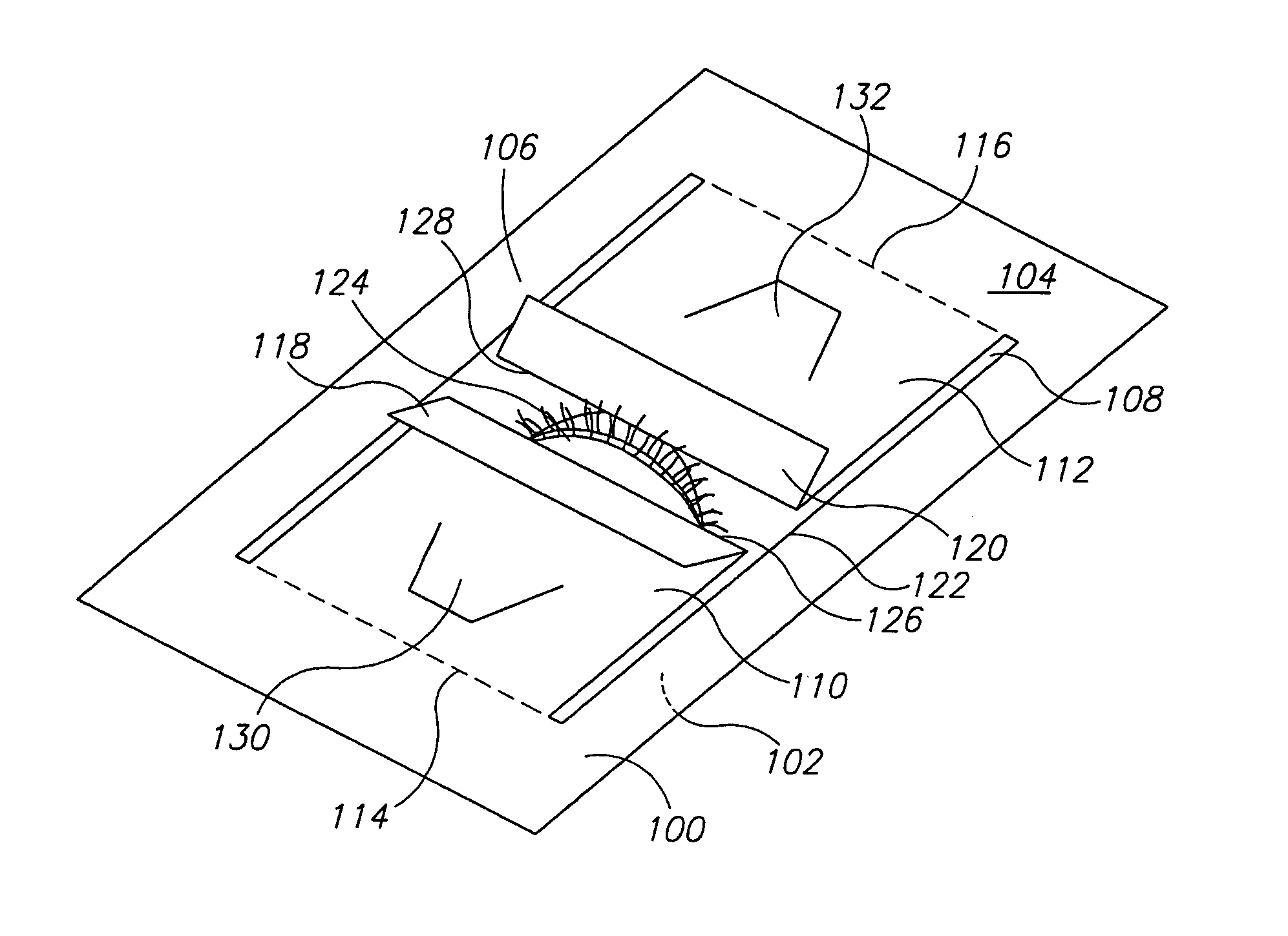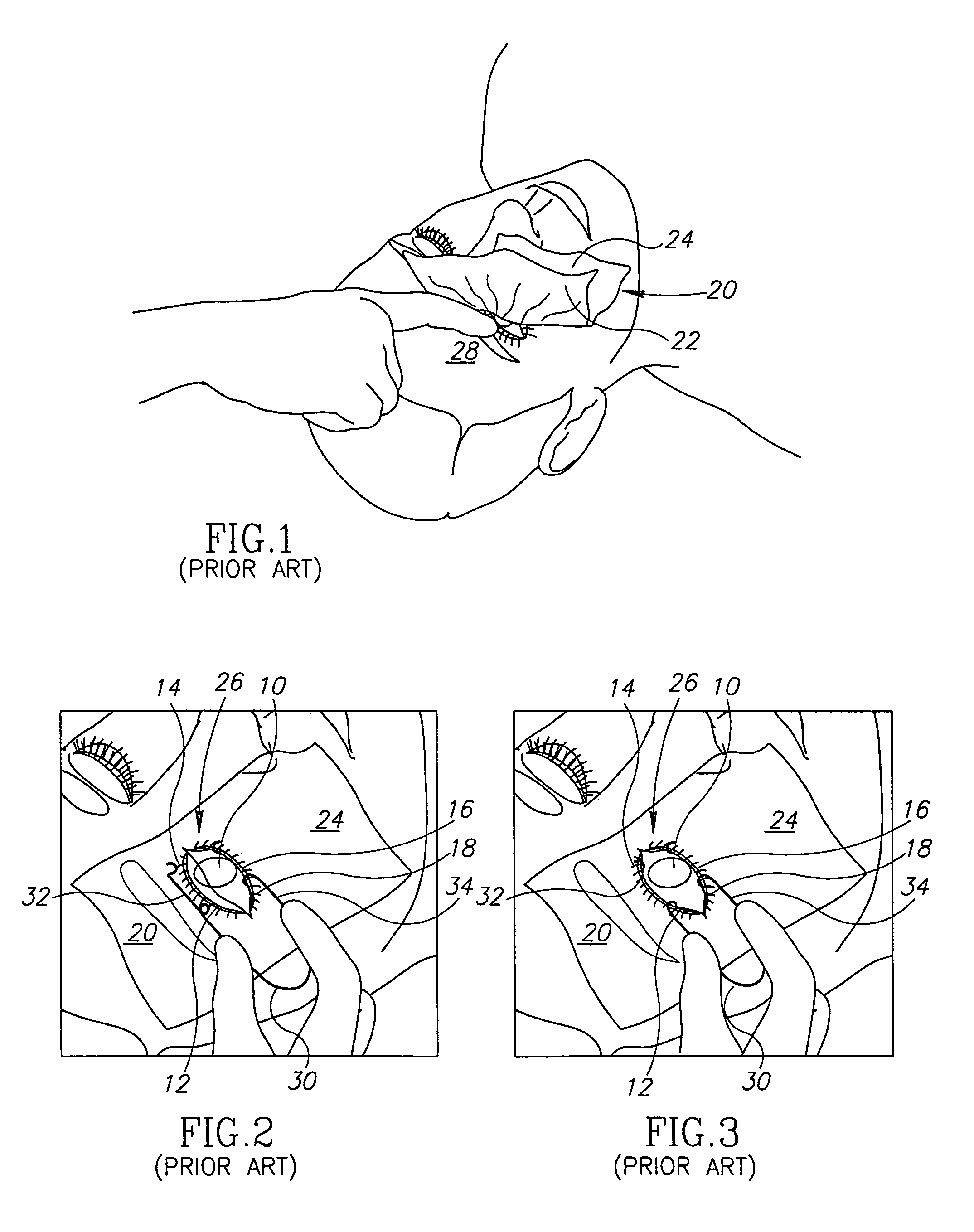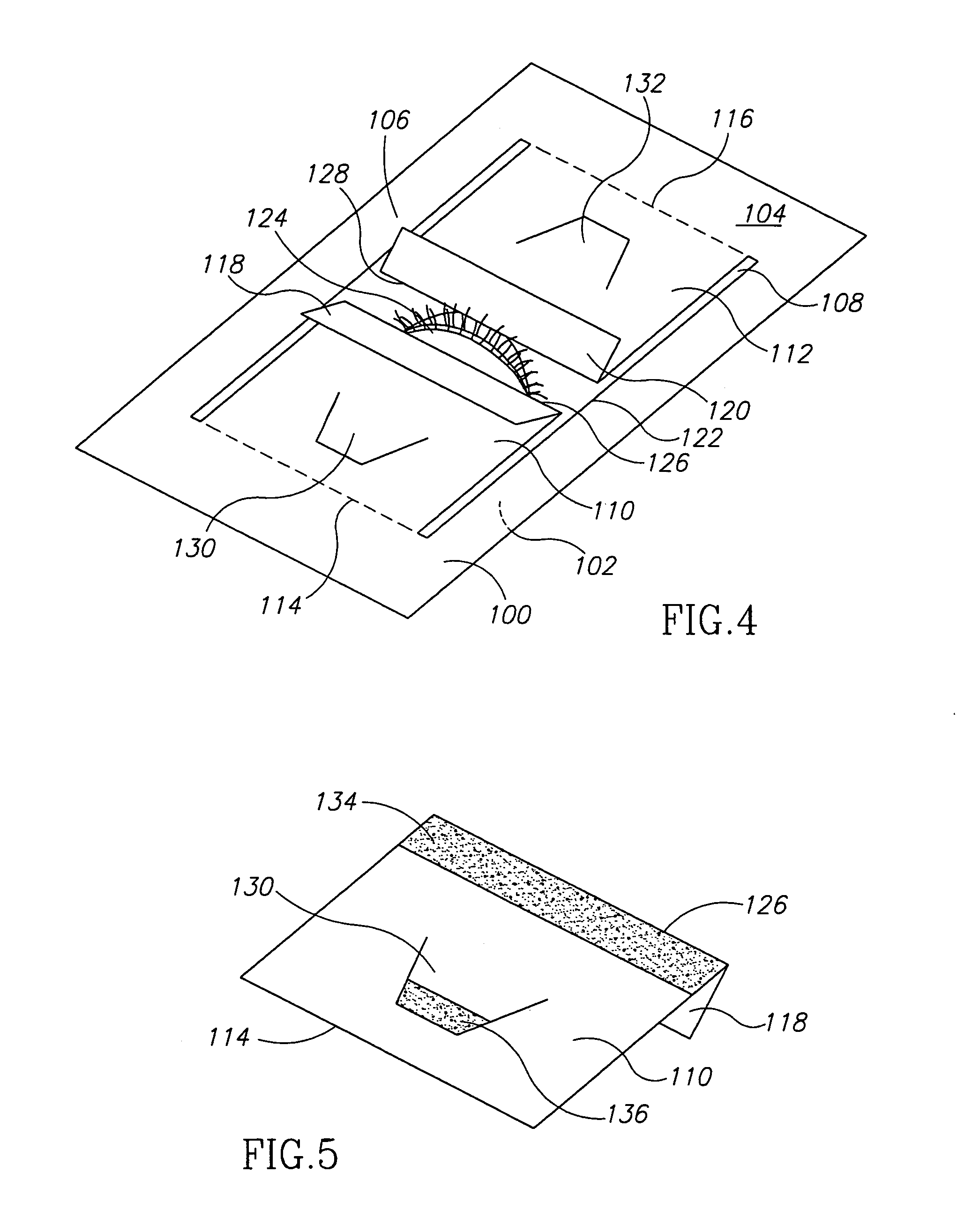Retracting eye drape
a retracting eye and drapery technology, applied in the field of surgical eye drapes, can solve the problems of mild abrasion of the corneal surface, uncomfortable for patients, and inconvenient application, and achieve the effects of reducing the possibility of corneal surface abrasion, facilitating the incorporation of eyelashes, and facilitating the application
- Summary
- Abstract
- Description
- Claims
- Application Information
AI Technical Summary
Benefits of technology
Problems solved by technology
Method used
Image
Examples
Embodiment Construction
[0048]The present invention provides a new type of draping system, and method of applying the drape, prior to eye surgery. The drape is applied with the patient's eye closed, reducing the discomfort to the patient and risk of corneal surface abrasion. The drape and method of application also make it easier and less cumbersome for the surgeon to apply.
[0049]With reference to FIG. 4, a drape 100 is described having an adhesive surface 102, a non-adhesive surface 104, and a retraction area 106. Prior to application of the drape 100, the adhesive surface 102 is protected by a protective sheet (not shown) that can be pulled away to expose the adhesive surface 102. The retraction area 106 includes an open area 108 in the non-adhesive surface 104 and two retracting elements, an upper retraction member 110 and a lower retraction member 112, preferably attached to the non-adhesive surface 104 at upper member base 114 and lower member base 116, respectively.
[0050]Each retraction member 110,11...
PUM
 Login to View More
Login to View More Abstract
Description
Claims
Application Information
 Login to View More
Login to View More - R&D
- Intellectual Property
- Life Sciences
- Materials
- Tech Scout
- Unparalleled Data Quality
- Higher Quality Content
- 60% Fewer Hallucinations
Browse by: Latest US Patents, China's latest patents, Technical Efficacy Thesaurus, Application Domain, Technology Topic, Popular Technical Reports.
© 2025 PatSnap. All rights reserved.Legal|Privacy policy|Modern Slavery Act Transparency Statement|Sitemap|About US| Contact US: help@patsnap.com



